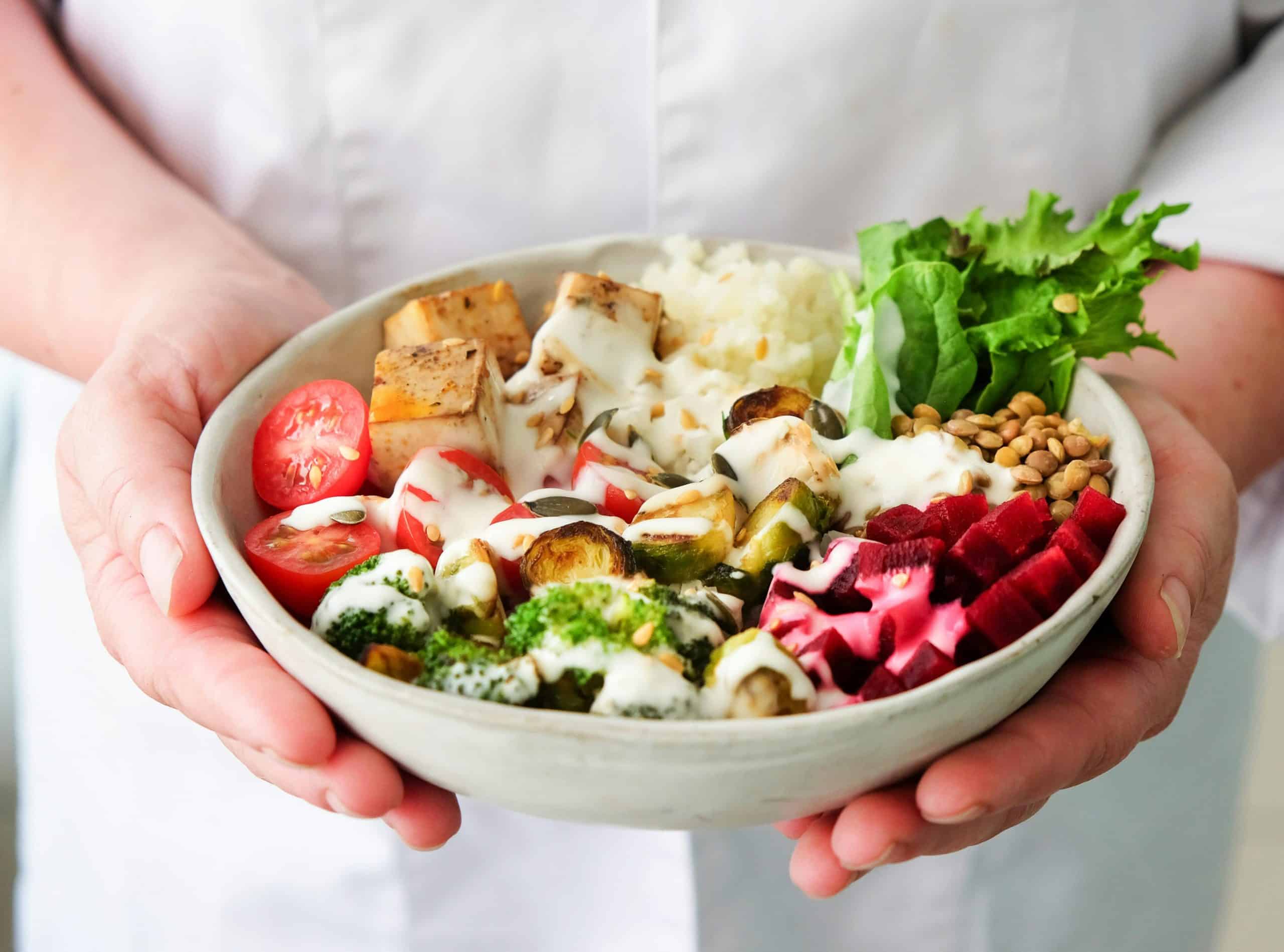How to achieve the Perfect Balance in a Vietnamese Banh Mi with Pickled Vegetables?

Banh Mi is an epitome of Vietnamese cuisine’s rich cultural fusion and gastronomical prowess. A thrilling medley of flavors and textures, this Vietnamese sandwich is a culinary journey on its own. It masterfully blends the crisp, warm crust of a French baguette with the tanginess of pickled vegetables, the savory succulence of pork or chicken, and the fresh, herbaceous notes of cilantro. Today, we invite you on a tantalizing tour of constructing the perfect Banh Mi, a recipe that calls for a delicate balance of ingredients, patience, and love for good food.
The Art of Choosing and Preparing the Bread
The foundation of a perfect Banh Mi is the bread. A classic French baguette does the trick here. The ideal Banh Mi baguette has a light, airy crumb and a thin, crackly crust. The bread should be warm, fresh, and light. Avoid baguettes with a hard crust and dense crumb, which could overpower the delicate balance of the fillings.
Have you seen this : What’s the secret to Delicious Gluten-Free Almond Joy Cookies?
To prepare the bread, preheat your oven to 350°F (180°C) and warm the baguette for about 10 minutes. Once it’s perfectly crisp and warm, slice it lengthwise without cutting all the way through, creating a pocket for the fillings.
Building the Perfect Protein Base: Pork, Chicken or Tofu?
The next layer to the Banh Mi is the protein. Vietnamese sandwiches are traditionally made with grilled pork, but you can also use chicken or even tofu for a vegetarian version.
Also to discover : What’s the technique for a Rich Duck Ragu with Pappardelle Pasta?
For the pork, marinate thinly sliced pork shoulder with fish sauce, sugar, black pepper, and minced garlic for at least 1 hour, then grill or stir-fry until it is caramelized and slightly charred.
For the chicken, marinate boneless, skinless chicken thighs with soy sauce, fish sauce, sugar, sesame oil, and minced garlic and grill or stir-fry until it’s well-cooked and juicy.
For the tofu, start by pressing the tofu to remove excess moisture. Cut it into slices, then marinate it in soy sauce, brown sugar, garlic, and ginger. Bake in the oven until it’s golden and crispy.
Crafting the Heart: Pickled Vegetables
Pickled vegetables are the soul of a Banh Mi. Their tangy flavor and crunchy texture provide a delightful contrast to the meaty proteins and rich sauces. The classic pickled vegetables for Banh Mi are carrot and daikon radish.
To pickle the vegetables, start by peeling and cutting the carrot and daikon into matchsticks. In a bowl, toss the vegetables with some salt and let them sit for about 5 minutes to draw out moisture. Rinse and drain them thoroughly.
In a separate bowl, mix vinegar, sugar, and water until the sugar is dissolved. Add the vegetables to the mix, ensuring they are fully submerged. Let the mixture sit for at least an hour to allow the flavors to meld.
The Final Touch: Fresh Herbs and Sauce
Finish your Banh Mi with fresh herbs and sauce. The freshness of the herbs plays a crucial role in balancing out the rich flavors of the meat and the pickled vegetables. Typically, cilantro and cucumber slices are used.
The sauce adds a final layer of complexity to your sandwich. A classic Banh Mi sauce usually includes mayonnaise, soy sauce, and Maggi seasoning. However, you can also add some heat with a swipe of Sriracha or a drizzle of chili oil.
The trick to achieving the perfect balance in a Banh Mi is to consider the interplay of flavors and textures. Every component has its role: the bread acts as a warm, crisp vessel, the proteins provide savory richness, the pickled vegetables offer tangy crunch, the fresh herbs supply a refreshing note, and the sauce ties everything together. It’s a symphony of flavors packed into one sandwich, a testament to the Vietnamese’s knack for creating dishes that are greater than the sum of their parts.
Keep in mind that making perfect Banh Mi takes patience and practice. Feel free to tweak the ingredients according to your preference. After all, the best part about cooking is making a recipe your own. Enjoy the process and savor the results. After all, good food is a celebration of life. Bon appétit!
Understanding the Distinct Flavors: Vietnamese Banh Mi Ingredients
Dipping into the rich and diverse ingredients used in Vietnamese Banh Mi will help you appreciate the culinary art of this sandwich even more. The main components of a Banh Mi sandwich are the bread, protein, pickled veggies, fresh herbs, and sauce.
The bread, as previously stated, is a fresh, light French baguette, ideally having an airy crumb and a thin, crackly crust. The protein can range from grilled pork, chicken to tofu, depending on personal preferences. A classic Banh Mi recipe will include marinating the protein in an aromatic blend of fish sauce, sugar, and garlic. For a vegetarian version, tofu is marinated in a savory mixture of soy sauce, brown sugar, garlic, and ginger.
The pickled vegetables or pickled veggies add a crunchy texture and tangy flavor, offering a delightful contrast to the savory proteins. Carrots and daikon radish are usually used, which are cut into matchsticks and pickled in a solution of vinegar, sugar, and water.
Fresh herbs like cilantro and cucumber slices, alongside a well-seasoned sauce, typically featuring mayonnaise, soy sauce, and Maggi seasoning, finalize the sandwich. The freshness of the herbs plays a crucial role in balancing out the rich flavors of the meat and the pickled vegetables. For those who enjoy a spicy kick, a swipe of Sriracha or a drizzle of chili oil can be added.
A Delicious Conclusion: The Vietnamese Banh Mi
The Vietnamese Banh Mi is a celebration of flavors that showcases the excellence of Vietnamese cuisine. The sandwich is a masterpiece of balanced flavors, textures, and ingredients. The crunchy, warm baguette, the savory succulence of marinated proteins, the tangy crunch of pickled carrots and daikon, the cooling freshness of herbs, and the aromatic intensity of the sauce all come together to create a dish that is truly greater than the sum of its parts.
Achieving the perfect Banh Mi sandwich requires patience, understanding of ingredients, and the subtle interplay of flavors. The key is to strike a delicate balance between the different components. Every flavor and texture has its place, and it’s the harmonious interplay between these elements that creates the perfect Banh Mi.
The process of making a Banh Mi can be as enjoyable as eating one. Experiment with different proteins, sauces, and pickling methods. Use an instant pot to prepare your meats or try different types of vinegar in your quick pickled veggies. Add a squeeze of lime juice or a drizzle of olive oil to your sauces. The possibilities are endless.
The beauty of a Banh Mi lies not just in its taste but also in its flexibility and adaptability. It’s a satisfying culinary journey that allows you to explore different flavors, textures, and techniques. Whether you are making a pork Banh, chicken Banh or a vegetarian one, the process offers a delightful exploration of Vietnamese cuisine.
In conclusion, a well-made Banh Mi is more than just a sandwich. It’s a celebration of Vietnamese culture and cuisine, a symphony of flavors packed into a simple yet sophisticated dish. It’s not just about the end result; the process itself is an enriching culinary journey. So, wear your chef hat, roll up your sleeves and start creating your Banh Mi masterpiece. Remember, patience is key, and the reward is a delightful Vietnamese sandwich that you can proudly call your own. Enjoy your Banh Mi adventure!
